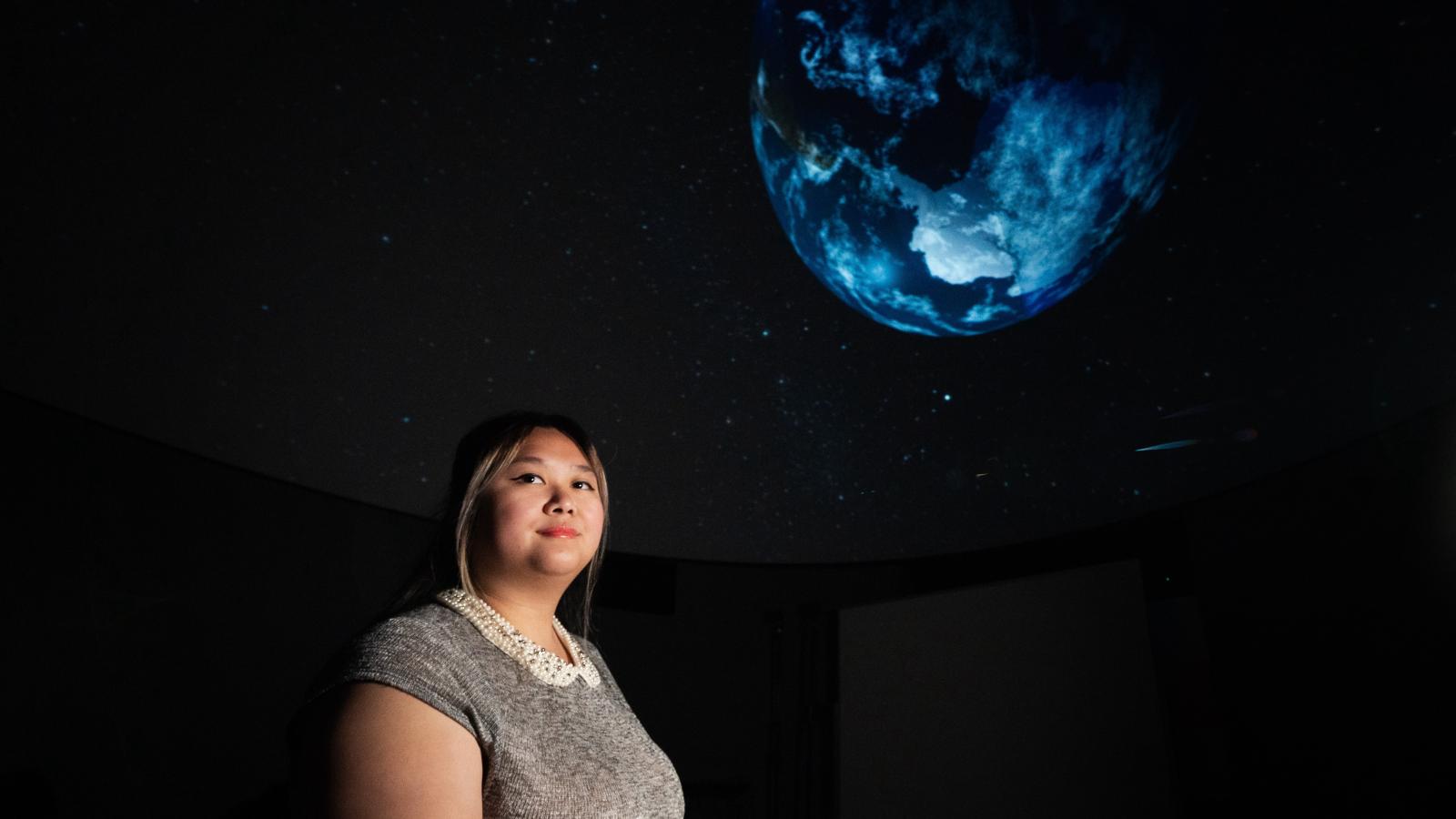Planets beyond our solar system have long fascinated Kendra Nguyen ’24.
“When I was a kid,” they say, “I always wondered about other worlds and what other worlds are like.”
Nguyen’s deep-rooted curiosity led them to Pomona, where they found a stellar Physics and Astronomy Department with faculty who supported their interest in finding and characterizing exoplanets—or planets that orbit stars outside the solar system.
Yet, as a first generation, low-income (FLI) student of color by way of Baldwin Park, California, the 22-year-old battled imposter syndrome when they started at the College.
As Nguyen struggled with schoolwork while they sought a place at Pomona, Seeley W. Mudd Professor of Physics Janice Hudgings was one of the first on campus to assure Nguyen they belonged.
“She told me if there was no space for me, she would make space,” the physics major recalls. “She made me feel I had a space here.”
Last month, Nguyen was one of 19 undergraduate students from around the country to receive the Chambliss Astronomy Achievement Student Award for exemplary research—the second time being recognized by the Washington, D.C.-based American Astronomical Society.
It's rare to meet a student [like Kendra] who combines such smarts, enthusiasm and grit.
— Physics Professor Janice Hudgings
This past summer, Nguyen served as a Caltech WAVE Fellow, completing a 10-week research program for undergraduate students from underrepresented backgrounds. Working on a project alongside Heather Knutson and Michael Greklek-McKeon, they confirmed and characterized two Earth-sized planets orbiting an M-Dwarf star.
For their research, Nguyen used observations from the Las Cumbres Observatory global network of telescopes to obtain transit times for the planets, which ultimately helped place the first constraints on their mass, bulk composition and habitability.
“Preliminary results,” Nguyen wrote in a brief synopsis of their project, “suggest that these planets are low-density and are unlikely to be Earth-like or purely rocky planets, therefore possessing a volatile envelope of water or primordial hydrogen-rich gas. Depending on the atmosphere, one of the planets may even possess liquid water on its surface!”
Nguyen, who presented their project in poster form at the AAS’s January meeting, plans to submit a discovery paper on the planets later this spring and will continue researching exoplanets in graduate school.
Reflecting on their time at Pomona, Nguyen credits many on campus for stoking their curiosity in astronomy—chiefly, their Techniques in Observational Astrophysics class with Associate Professor of Physics and Astronomy Philip Choi, where Nguyen developed the skills required to do exoplanet research.
“I appreciate my professors believing in me when I didn’t think I would be a good researcher,” Nguyen says. “Physics and astronomy can be tough at times, but the faculty are here to support you, and they really do believe in you.”
Last November, Hudgings penned Nguyen a glowing letter of recommendation for graduate school, calling her mentee’s trajectory at Pomona “simply remarkable.”
In addition to being a consummate student and burgeoning astrophysicist, Nguyen serves as coordinator of Pomona’s APS Inclusion Diversity and Equity Alliance (IDEA) team and runs the Physics and Astronomy Department’s Queer and Trans Alliance.
They also served as a teacher’s assistant for the Introductory Astronomy course, and the department’s most advanced course in quantum mechanics.
“Kendra has it all: smarts, enthusiasm, and grit,” Hudgings says. “I envy the grad school advisor who lands such a talented, driven, and inspiring student.”
